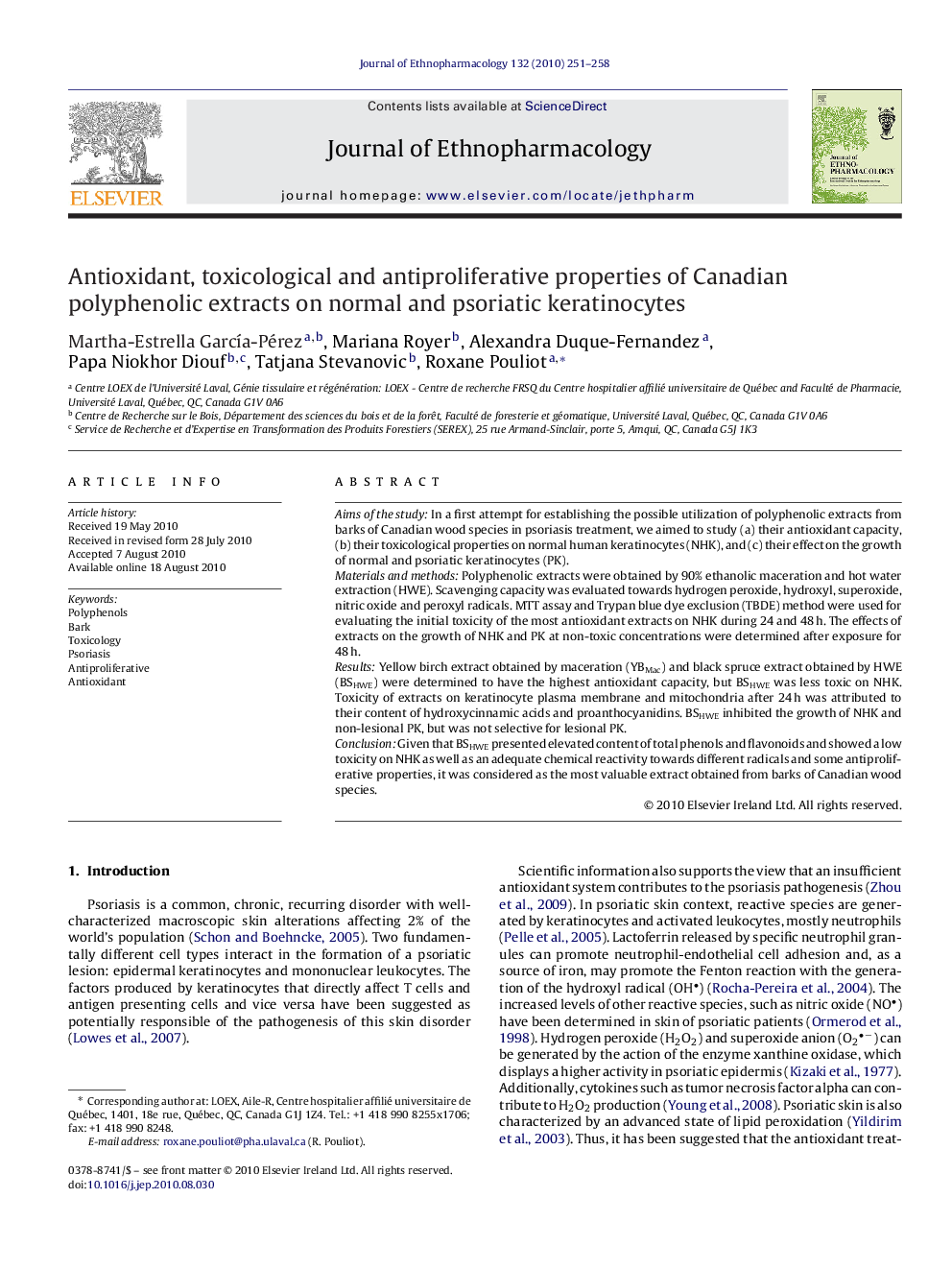| Article ID | Journal | Published Year | Pages | File Type |
|---|---|---|---|---|
| 2545674 | Journal of Ethnopharmacology | 2010 | 8 Pages |
Aims of the studyIn a first attempt for establishing the possible utilization of polyphenolic extracts from barks of Canadian wood species in psoriasis treatment, we aimed to study (a) their antioxidant capacity, (b) their toxicological properties on normal human keratinocytes (NHK), and (c) their effect on the growth of normal and psoriatic keratinocytes (PK).Materials and methodsPolyphenolic extracts were obtained by 90% ethanolic maceration and hot water extraction (HWE). Scavenging capacity was evaluated towards hydrogen peroxide, hydroxyl, superoxide, nitric oxide and peroxyl radicals. MTT assay and Trypan blue dye exclusion (TBDE) method were used for evaluating the initial toxicity of the most antioxidant extracts on NHK during 24 and 48 h. The effects of extracts on the growth of NHK and PK at non-toxic concentrations were determined after exposure for 48 h.ResultsYellow birch extract obtained by maceration (YBMac) and black spruce extract obtained by HWE (BSHWE) were determined to have the highest antioxidant capacity, but BSHWE was less toxic on NHK. Toxicity of extracts on keratinocyte plasma membrane and mitochondria after 24 h was attributed to their content of hydroxycinnamic acids and proanthocyanidins. BSHWE inhibited the growth of NHK and non-lesional PK, but was not selective for lesional PK.ConclusionGiven that BSHWE presented elevated content of total phenols and flavonoids and showed a low toxicity on NHK as well as an adequate chemical reactivity towards different radicals and some antiproliferative properties, it was considered as the most valuable extract obtained from barks of Canadian wood species.
Graphical abstractFigure optionsDownload full-size imageDownload as PowerPoint slide
